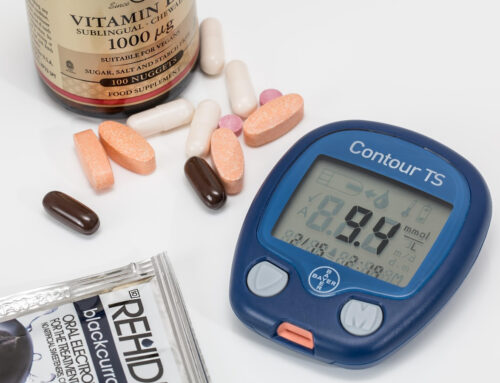For years, we have been testing our patients’ Vitamin D levels and finding an astonishing level of deficiency. The observed laboratory range is 30-100 ng/mL. Even in the state of Colorado, where the sun shines at least 300 days a year, we find that quite a few patients are either below or very close to 30 ng/mL. The optimal range is between 60-80 ng/mL.
Severe deficiencies in the past would have led to decreased bone mineralization. This could result in a childhood condition called rickets, which is characterized by deformity and impeded growth of the long bones. Fortunately, this condition is rarely seen today. In adults, decreased bone mineralization can lead to osteomalacia, osteoporosis, and osteopenia. Since 1930, milk in the US has been fortified with 400 i.u. of Vitamin D per quart, which led to a dramatic decline in the number of children suffering from rickets. Adults still tend to suffer from diseases of poor bone mineralization, but the reasons are varied– that is another blog!
Vitamin D deficiency can be linked to many ailments including: bone pain, muscle weakness, increased risk of death from cardiovascular disease, cognitive impairment in adults, severe asthma in kids, and cancer. Vitamin D may play a role in the prevention and or treatment of: diabetes type I and II, hypertenision, glucose intolerance and MS, as well as other conditions. So, it is a rather important nutrient!
For the past 10 years there has been mounting research that points to the benefit of having adequate levels of serum vitamin D. Researchers at Kaiser Permanente have released a new study of 4600 women over 65 years of age. The research found that, over the course of the 5 year study, women with lower vitamin D levels gained an average of 2 pounds more than women with vitamin D levels in the normal range. 12% of the women gained at least 5% of their baseline weight, and of that 12%, 78% were deficient in vitamin D. So the majority of women who gained weight in the study had low vitamin D levels. (LeBlanc, ES, et. al., Journal of Women’s Health, June 25, 2012, Epub ahead of print)
Additional findings were that women with vitamin D equal to or greater than 30 ng/mL had a baseline weight that was lower (141.6 lbs) than women with levels less than 30 ng/mL (148.6 lbs).
The author of this study hypothesizes that weight gain from low vitamin D makes sense from an evolutionary perspective. When men and women were living in caves, they may have needed a few extra pounds to survive the winter. As the days got shorter, the extra weight would have helped to insulate them from the cold and also to provide a stored fuel source. Thus, the low level of the “sunshine vitamin” may slow down metabolism. This could account for the bit of extra weight we tend to gain in the winter months. Makes perfect sense, doesn’t it?
The take-home message for everyone is that, weight loss could potentially be included among the already numerous benefits of having adequate vitamin D levels. This study did not look at the effects of vitamin D levels in younger women, or in men of any age group. Ask your doctor for a 25 (OH) vitmain D test and shoot to get your levels between 60-80 ng/mL.



